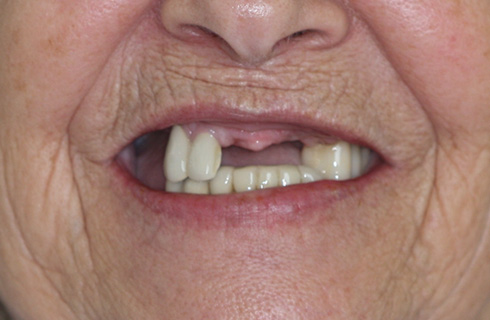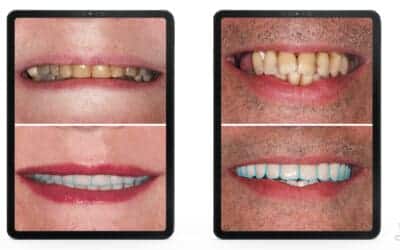This post was originally written by Dr. Phillip DeJesus in April 2017, and updated in April 2023. Full mouth reconstruction is a comprehensive...
Regular cleanings and oral hygiene are your smile’s best defense, ensuring health and confidence.
Experience you can trust
Compassion you can feel
Outcomes you can expect
Dental bridge procedure Bridgeport/Trumbull and Shelton dental office
If you’re missing teeth, a dental bridge offers a solution by filling the gaps with an artificial tooth anchored to adjacent teeth using dental crowns. Enjoy improved chewing and speaking abilities along with a natural-looking smile. Our family dental office provides personalized care, crafting and placing a custom-made dental bridge to restore your smile and enhance your oral health, giving you the confidence to embrace life with a complete set of teeth.
Seeing is Believing


We're ready to restore your dental health when you're ready.
Make an appointment
You may call (203)378-9737 for Shelton or (203)372-1220 for our Bridgeport/Trumbull Office
Advanced Restorative Dentistry
Rejuvenate your smile with our comprehensive treatment
Restore Your Smile
Enjoy renewed strength and beauty in every tooth for a fully functional and radiant smile.
A traditional dental bridge, the most common type, is composed of dental crowns (caps) on each end with artificial teeth (pontics) in between. By bonding the crowns to your healthy natural teeth (abutments) on either side of the gap, the artificial teeth seamlessly fill in the missing space. At our family dental office, we utilize traditional dental bridges when there are strong natural teeth available on both sides of the gap, ensuring a reliable and aesthetically pleasing restoration for your smile.
Similar to a traditional bridge, a cantilever bridge features a crown on one end instead of both. This means that when the bridge is bonded to your abutment tooth, the artificial tooth (pontic) extends across the gap, creating an overhanging effect. Cantilever bridges are commonly used when there are natural teeth available only on one side of the gap. It’s important to note that due to their design, cantilever bridges may not possess the same level of strength as traditional bridges, but they still provide a viable option for restoring your smile.
Utilizing metal wings instead of crowns for stability, a Maryland bridge, also known as a resin-bonded bridge, is secured by bonding the wings to the backs of adjacent teeth. This type of bridge is commonly employed for replacing front teeth, as they may not possess the durability required to withstand the chewing forces of back teeth.
An implant-supported bridge, the bridge is supported by dental implants rather than natural teeth, resembling a traditional bridge. Dental implants, which serve as replacement tooth roots, are small threaded posts. Prior to attaching the bridge, the implants need to fully integrate (fuse) with the jawbone, a process that typically takes three to six months, or longer based on individual circumstances. Dentists recommend implant-supported bridges when there are three or more consecutive missing teeth.
Schedule Your Next Visit with
DeJesus Dental Group
FAQs
How does a dental bridge attach to my teeth?
A dental bridge is anchored on either side by crowns placed over the adjacent natural teeth or implants supporting the bridge.
What are the benefits of choosing a bridge over other dental restorations?
Bridges are beneficial for filling the space of missing teeth, preventing the shifting of remaining teeth, maintaining facial shape, and restoring chewing and speaking abilities.
Are there different types of bridges?
Yes, there are several types of bridges, including traditional, cantilever and Maryland bonded bridges, each suitable for different situations and locations in the mouth.
How long does it take to get used to a new bridge?
Adjusting to a new bridge regarding feel and function typically takes a few weeks. Eating soft foods and gradually reintroducing other foods can help ease this transition.
Related Articles
Dental Implants: A Guide to Understanding the Process and Costs
For many people, losing a tooth can be a traumatic experience, especially if it leaves a visible gap when you smile. Fortunately, advances in...
23 Foods To Eat After Oral Surgery
It’s never more obvious how much we depend on healthy teeth as in the aftermath of oral surgery. Whether you’ve just had wisdom teeth removed...



